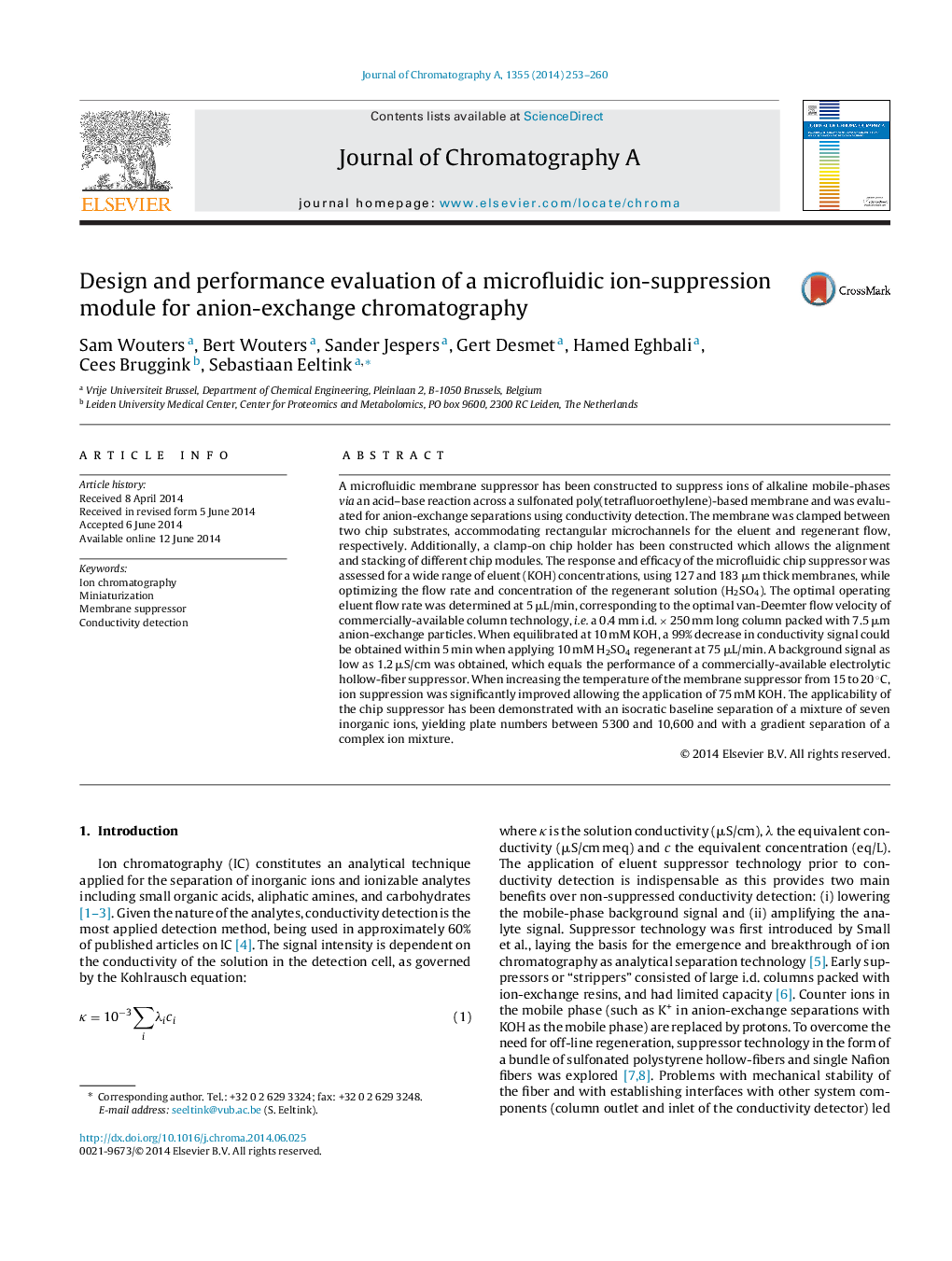| Article ID | Journal | Published Year | Pages | File Type |
|---|---|---|---|---|
| 1199801 | Journal of Chromatography A | 2014 | 8 Pages |
•A microfluidic membrane suppressor has been constructed and evaluated.•A chip holder has been constructed allowing to align and stack chip modules.•Increasing the temperature improved the suppression efficiency.•The applicability of the chip suppressor is shown in isocratic and gradient modes.
A microfluidic membrane suppressor has been constructed to suppress ions of alkaline mobile-phases via an acid–base reaction across a sulfonated poly(tetrafluoroethylene)-based membrane and was evaluated for anion-exchange separations using conductivity detection. The membrane was clamped between two chip substrates, accommodating rectangular microchannels for the eluent and regenerant flow, respectively. Additionally, a clamp-on chip holder has been constructed which allows the alignment and stacking of different chip modules. The response and efficacy of the microfluidic chip suppressor was assessed for a wide range of eluent (KOH) concentrations, using 127 and 183 μm thick membranes, while optimizing the flow rate and concentration of the regenerant solution (H2SO4). The optimal operating eluent flow rate was determined at 5 μL/min, corresponding to the optimal van-Deemter flow velocity of commercially-available column technology, i.e. a 0.4 mm i.d. × 250 mm long column packed with 7.5 μm anion-exchange particles. When equilibrated at 10 mM KOH, a 99% decrease in conductivity signal could be obtained within 5 min when applying 10 mM H2SO4 regenerant at 75 μL/min. A background signal as low as 1.2 μS/cm was obtained, which equals the performance of a commercially-available electrolytic hollow-fiber suppressor. When increasing the temperature of the membrane suppressor from 15 to 20 °C, ion suppression was significantly improved allowing the application of 75 mM KOH. The applicability of the chip suppressor has been demonstrated with an isocratic baseline separation of a mixture of seven inorganic ions, yielding plate numbers between 5300 and 10,600 and with a gradient separation of a complex ion mixture.
